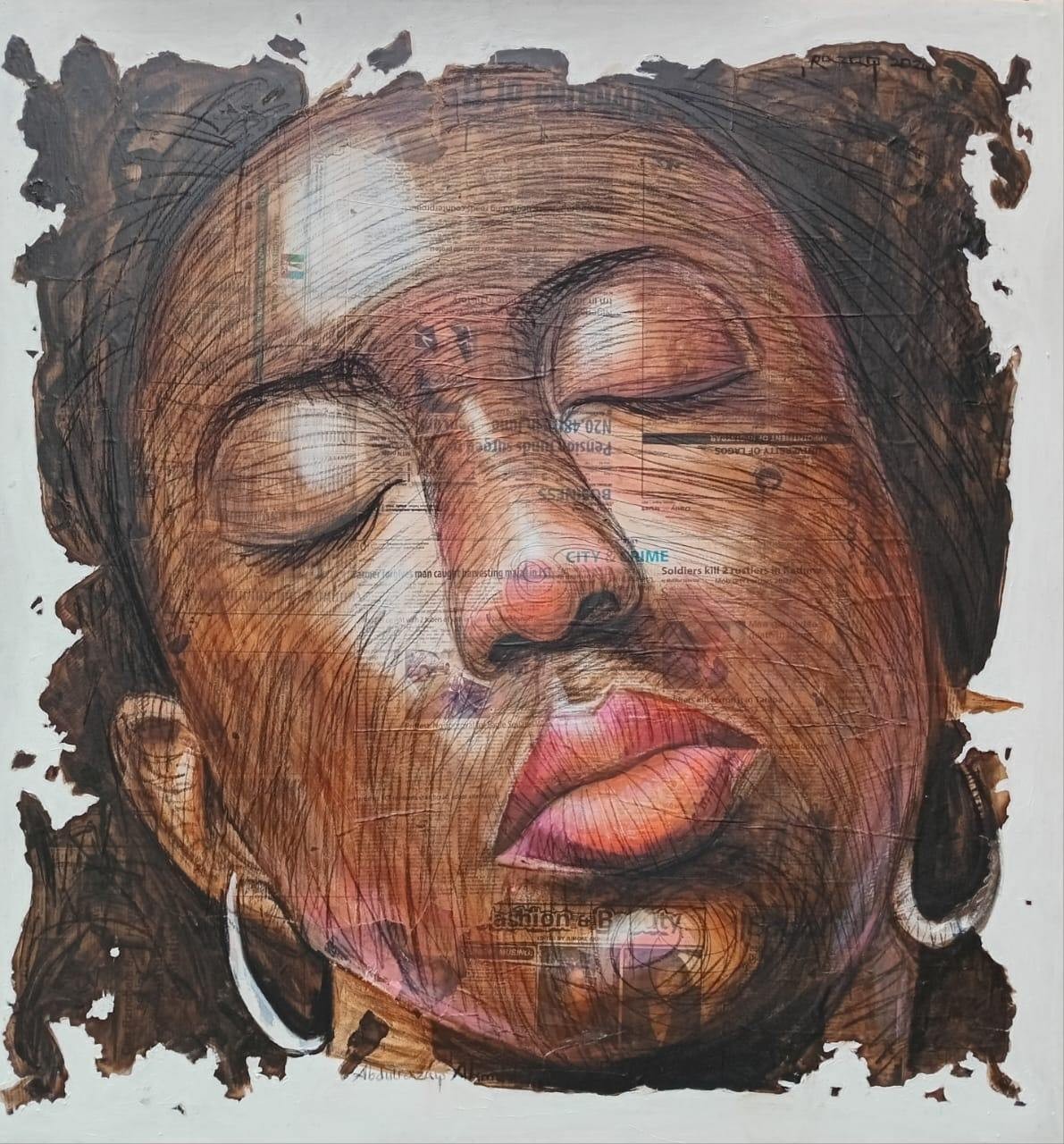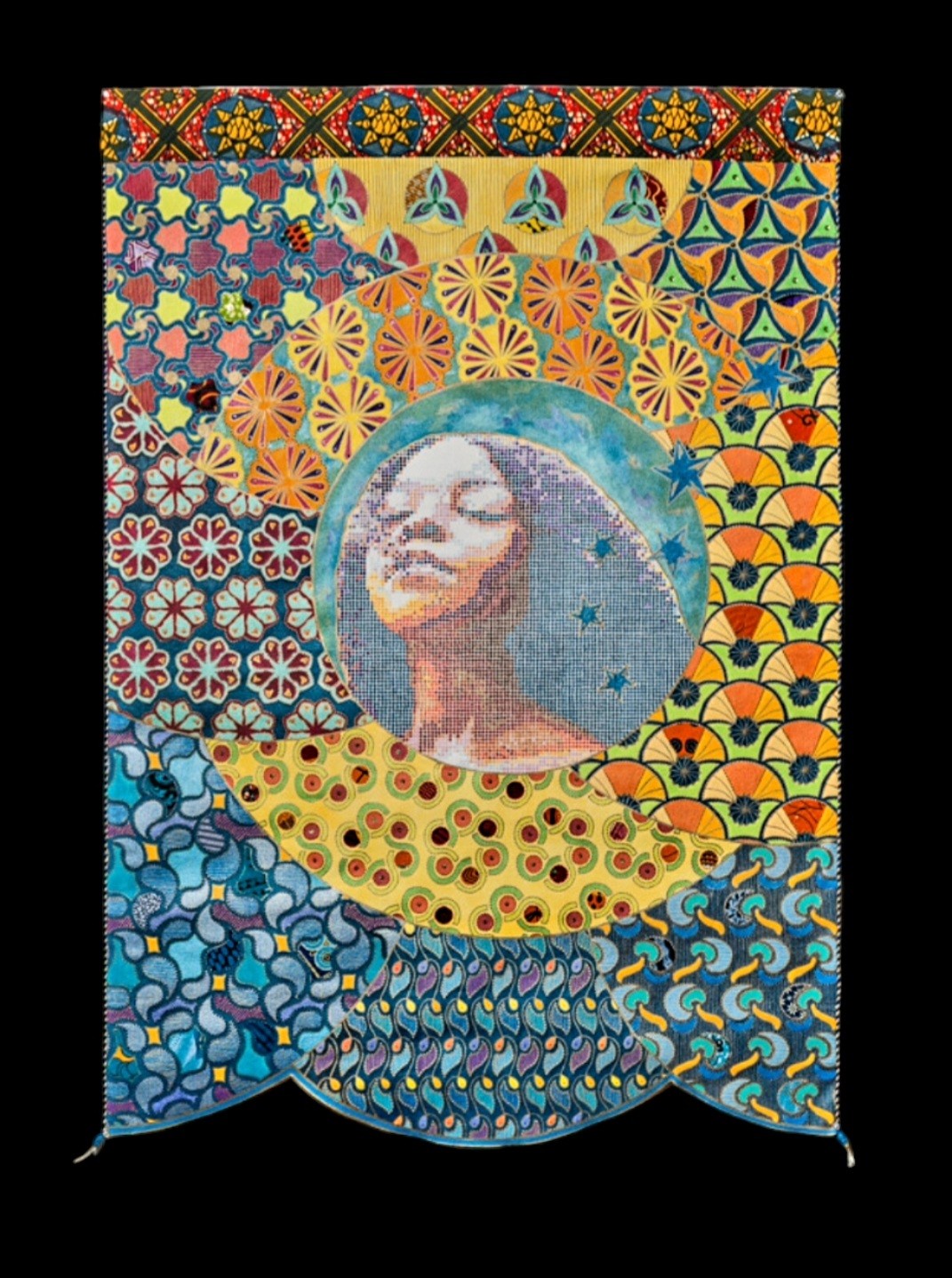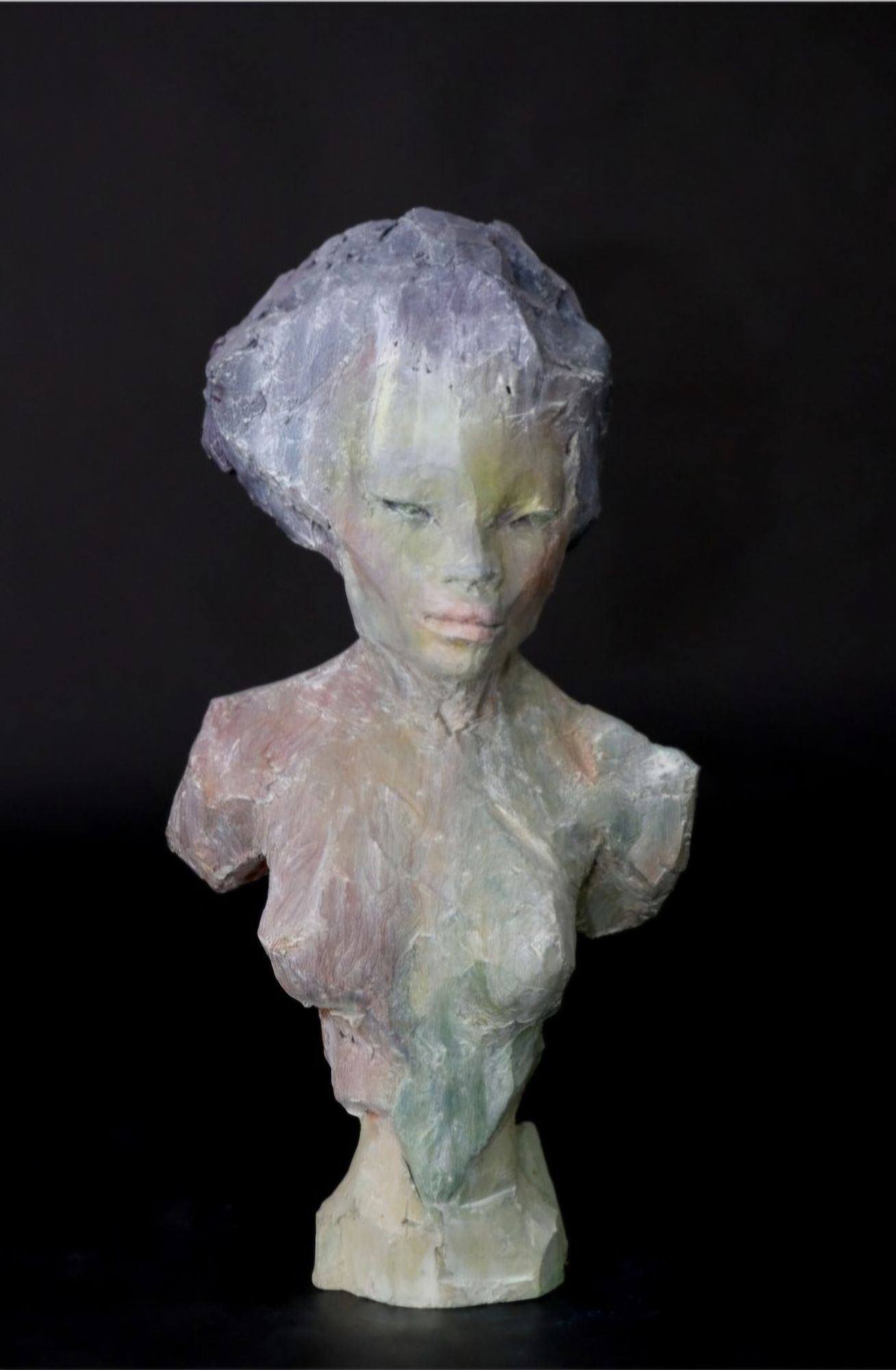Portraits from Africa and the Diaspora: A Visual Celebration of Identity and Legacy
Portraiture has always been a powerful tool for storytelling, identity formation, and cultural preservation within the African and Diasporic artistic traditions. Whether through painting, sculpture, textiles, or mixed media, artists use portraiture to celebrate Black identity, spirituality, and history. The four works of art presented here each contribute to this ongoing dialogue, demonstrating the evolution of portraiture as a medium of resistance, reverence, and reclamation.
Layered Memories: The Textural
Power of Mixed Media
art pictured : Abdulrazaq Ahmed/ "Dreams"
The first artwork presents a striking portrait of a woman with her eyes closed, her face layered with intricate textures and embedded text. This piece captures the interplay between past and present, where the surface acts as a palimpsest—an accumulation of histories, voices, and experiences. The warm, earthy tones of the subject’s skin contrast with the fragmented edges of the piece, symbolizing both resilience and fragility.
In many African and Diasporic traditions, portraiture does more than depict a subject—it carries their essence. This work evokes a dreamlike quality, reminiscent of ancestral connections, silent prayers, and the weight of inherited narratives. The etched lines on her skin resemble the patterns of time itself, making this portrait a meditation on memory, identity, and spiritual endurance.
Fabric, Beads, and Stars: The Divine Feminine in
African Textiles
art pictured: Beatrice Lebreton
The second piece moves away from the direct realism of the first and embraces the rich visual language of African textiles. A woman’s face emerges from a beaded or embroidered surface, surrounded by an explosion of intricate patterns and celestial motifs. This work recalls traditional African fabrics, such as Kente, Ankara, or Adire, all of which serve as carriers of history and meaning.
Portraiture in this context is not just about the individual but about the collective—the interwoven histories, symbols, and cosmologies that define Blackness across the globe. The circular framing of the figure gives her an almost divine presence, reinforcing the long-standing tradition of elevating Black women in artistic representation. Here, portraiture becomes a sacred act, a visual hymn celebrating Black womanhood, spirituality, and ancestral power.
Interconnection and Cosmic Narratives: The
Trio of Sisterhood
art pictured: Hampton R. Olfus/ "Security"
The third artwork takes a more abstract and illustrative approach, depicting three interconnected figures with elongated limbs, intense gazes, and celestial symbols adorning their heads. Their intertwined bodies and shared warmth suggest unity, familial bonds, and collective resilience. This recalls African artistic traditions that emphasize relational identity over individualism—where the self is always part of a greater whole.
Their attire, decorated with geometric and organic motifs, hints at African visual systems, from ancient rock art to modern textile design. The presence of cosmic elements—small celestial orbs circling their heads—suggests an Afro-futurist vision, where Black identity transcends time and space. Here, portraiture is more than representation; it is a mythological and spiritual act that speaks to past, present, and future simultaneously.
Sculpted Presence: The Endurance of the
Ceramic Portrait
art pictured: Chukes / "Ice"
The final piece, a ceramic bust titled Ice, offers a more sculptural take on Black portraiture. With its
weathered, almost eroded surface, the figure appears both fragile and eternal, as if shaped by the forces
of time itself. The muted, icy hues lend a ghostly quality, suggesting themes of preservation, transformation, and the passage of history.
weathered, almost eroded surface, the figure appears both fragile and eternal, as if shaped by the forces
of time itself. The muted, icy hues lend a ghostly quality, suggesting themes of preservation, transformation, and the passage of history.
Sculpture has a deep-rooted place in African portraiture, from the royal bronzes of Benin to the wooden ancestral figures of the Dogon people. This contemporary ceramic bust extends that lineage, emphasizing both the materiality of clay—earth itself—and the resilience of Black identity. It is a reminder that portraiture is not just about physical likeness but about capturing the essence of a person’s spirit, their endurance, and their place in history.
The Future of Black Portraiture
These four pieces, though distinct in medium and style, share a common goal: they honor Black identity through the power of portraiture. They speak to the past while envisioning new futures, merging tradition with innovation. In African and Diasporic art, portraiture has never been just about aesthetics—it is about self-determination, memory, and legacy.
As contemporary artists continue to push boundaries, portraiture remains a site of radical self-expression, spirituality, and cultural affirmation. Whether through textured mixed media,
beaded tapestries, abstract illustration, or sculpted forms, these works remind us of the infinite ways Black identity can be seen, felt, and remembered.




